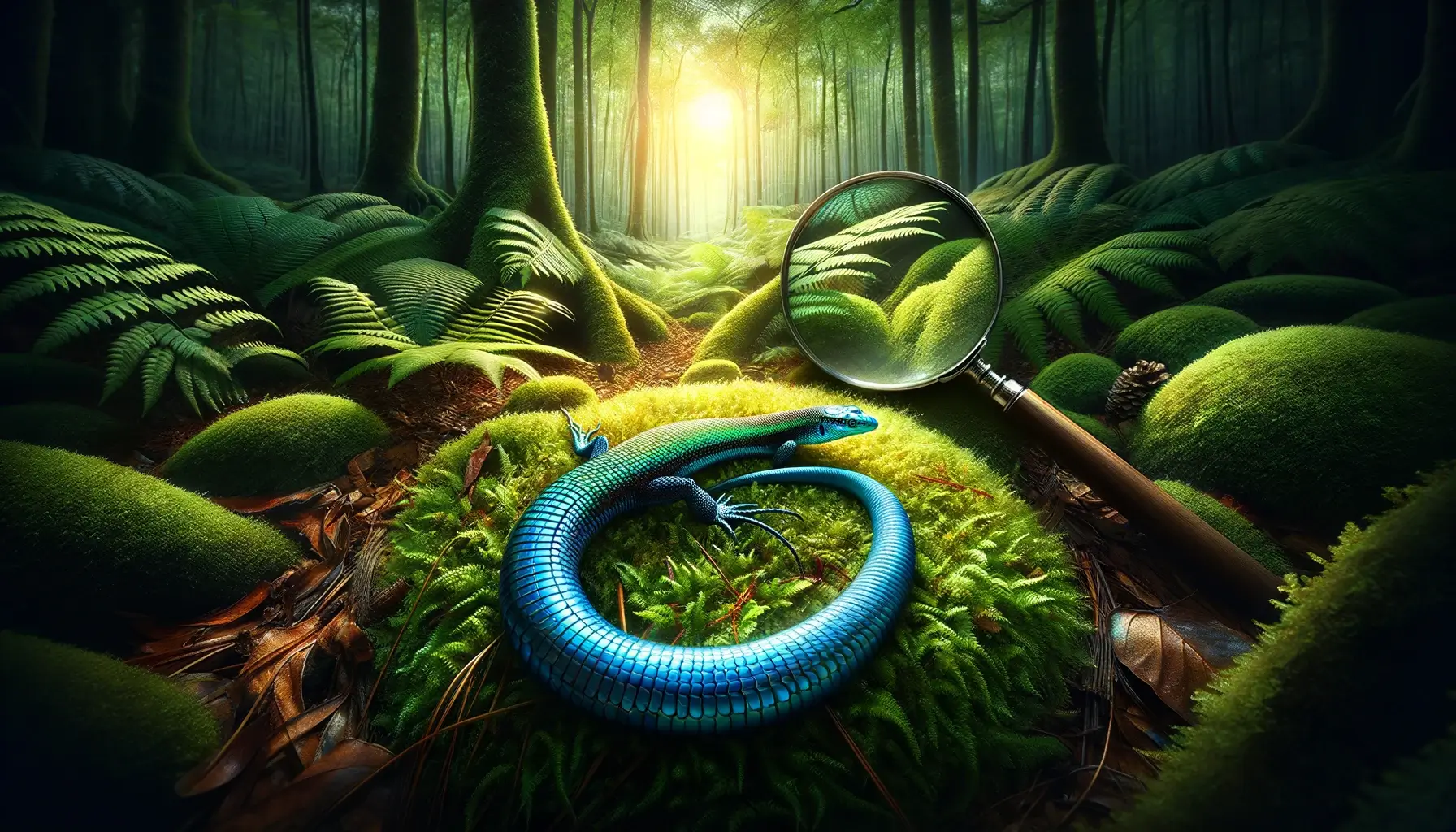Slithering through the undergrowth with its vibrant tail flashing like a neon sign, the blue-tailed Skink is a fascinating creature you’ve likely encountered if you’ve ever spent time in certain parts of the world. But what exactly is a blue-tailed skink? What does it eat? Where does it live? How does it behave? You will have many of these questions as a curious explorer of the natural world. Stick around, and we’ll embark on a fascinating journey into the world of this unique reptile, and by the end, you’ll have a comprehensive understanding of the blue-tailed Skink.
What Does A Blue-Tailed Skink Eat
Diving into the diet of the Blue-Tailed Skink, you’ll find they primarily feast on various insects such as crickets, beetles, and caterpillars. So, what does a blue-tailed skink eat? Beyond these insects, you’ll discover their diet includes spiders, snails, and other small invertebrates. It’s a testament to their adaptability and survival instinct.
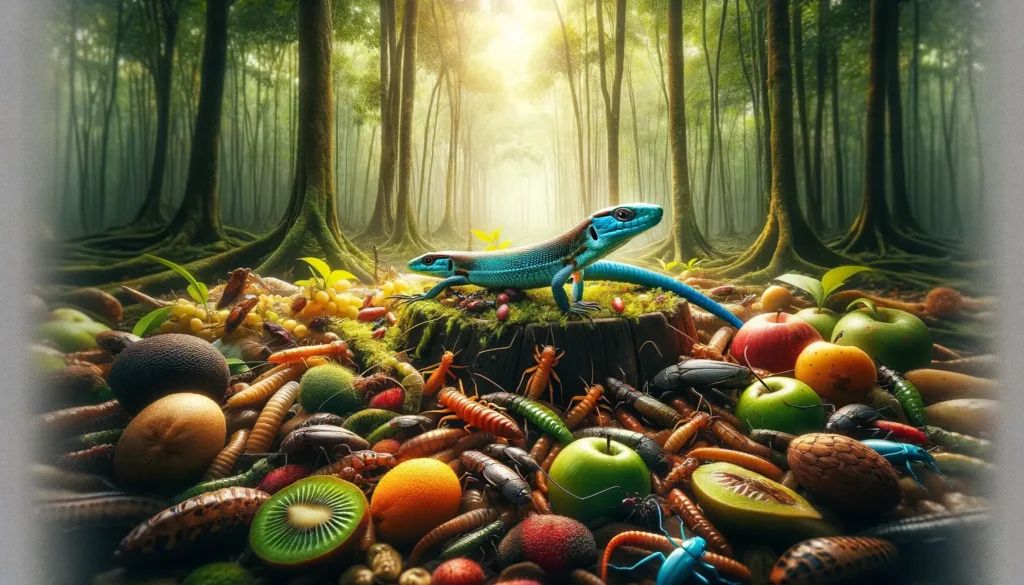
If you’ve been pondering what to feed a blue-tailed skink in captivity, you’d want to replicate its natural diet as closely as possible. This includes providing a variety of insects to mimic the diversity they’d encounter in the wild. Remember, the freedom to choose is a primal instinct, and your skin will relish the opportunity to hunt and select its meal.
As for the question about blue-tailed Skink, what do they eat? It’s crucial to note that while they’re carnivorous, they don’t turn down the occasional plant matter, especially during scarcity. So, supplement your diet with some greens.
Understanding what blue-tailed skinks eat enhances their care and provides insights into their behavior and natural habitat dynamics.
Blue Tailed Skink Food
When it comes to feeding your blue-tailed Skink, it’s essential to carefully consider and replicate the variety found in their natural diet to ensure their health and longevity. The blue-tailed Skink, scientific name Plestiodon fasciatus, is an omnivorous reptile, meaning it consumes a mix of plant and animal matter.
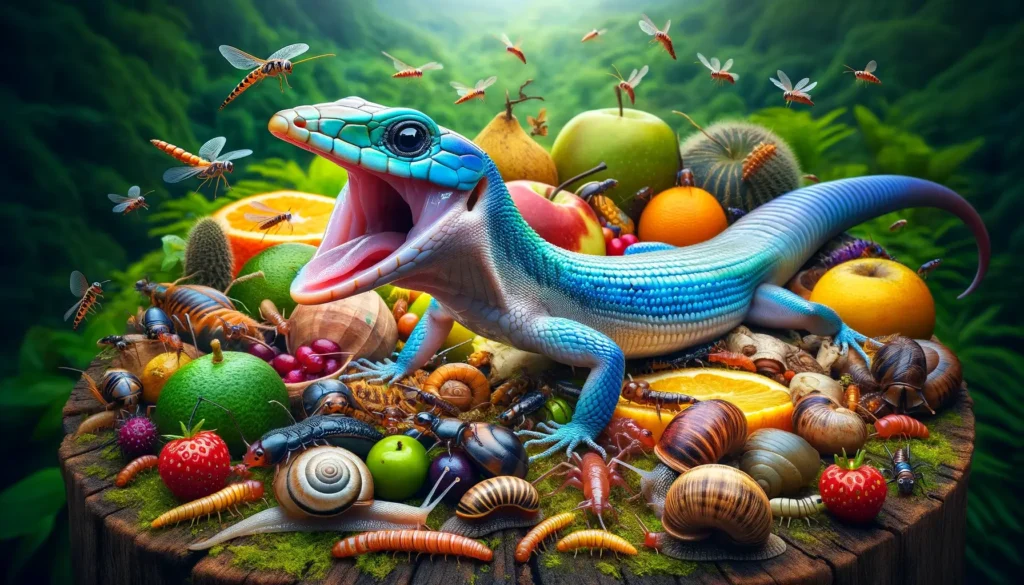
In keeping a blue-tailed skink, it’s crucial to provide a diet that includes insects like crickets or mealworms and fruits, vegetables, and leafy greens. However, remember to chop or grate these to aid in their digestion finely. If you have a blue-tailed skink in-house, you may offer them occasional protein treats like cooked egg or small mice.
As you can see, blue-tailed skink food is diverse and requires careful planning. But, it’s a small price to pay for the pleasure of their company. If you’re serious about how to care for a blue-tailed skink, pay attention to their dietary needs. Proper nutrition is pivotal in their overall well-being, growth, and lifespan. Always strive to provide a balanced diet that closely mimics what these creatures naturally consume in the wild.
Full Grown Blue Tailed Skink
In caring for a blue-tailed skink, it’s essential to understand what to expect as they reach full maturity. You’re likely wondering, ‘How big does a blue-tailed skink get?’ and ‘How big can a blue-tailed skink get?’ Well, an adult blue-tailed skink typically grows to around 20 centimeters in length, with the tail accounting for about two-thirds.
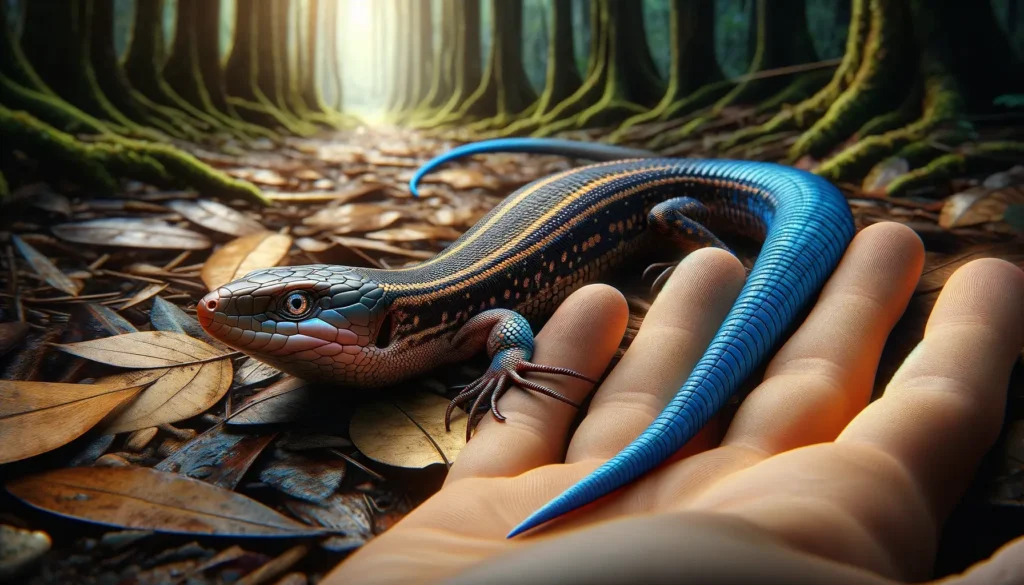
Freedom-loving adventurers like you should be aware that:
The vibrant blue tail that gives the creature its name fades as the Skink matures, representing a symbol of growth and change.
Adult blue-tailed skinks are quite active, embodying the essence of freedom. They are explorers in their environment, reflecting your spirit of adventure.
Despite their size, they have a gentle nature, a reminder that strength and gentleness coexist.
Blue Tailed Skink Facts
It is fascinating to delve into some key facts about blue-tailed skinks, a species renowned for its unique characteristics and behaviors. The blue-tailed Skink’s scientific name is Cryptoblepharus egeriae, native to Australia. What’s captivating is that this species isn’t venomous, contrary to some beliefs. This Skink uses its vibrant tail as a survival technique to distract predators while it escapes.
The blue-tailed skink location is primarily in the coastal regions of Australia, but they’ve also been found in some parts of Southeast Asia. They’ve adapted to various habitats, from forests to urban environments, showcasing their resilient nature.
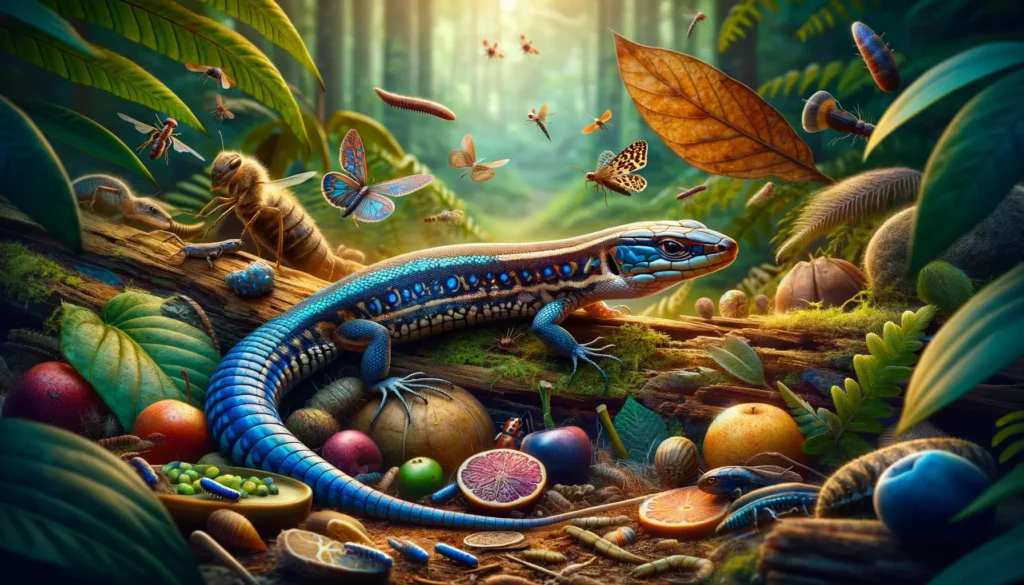
Another intriguing aspect is the blue-tailed skink life cycle. They lay eggs, which hatch into juveniles with bright blue tails. As they mature, the tail gradually changes to a grayish-brown color, mirroring the rest of their body. They can live up to 10 years in the wild, but their lifespan can extend to 20 years in captivity.
While these facts scratch the surface of the blue-tailed Skink’s intriguing life, they offer a glimpse into the complexity and adaptability of this fascinating reptile.
Adult Blue-tailed Skink Stepping into the world of adult blue-tailed skinks, it’s clear that their unique attributes and behaviors only become more pronounced with age. These fascinating creatures, with their vibrant blue tails, live in various habitats such as forests, grasslands, and rocky areas.
Consider the following aspects of adult blue-tailed skinks:
Where do they live?
Often found in Australia and Southeast Asia, these skinks are true survivors, adapting to varied environments. Yet, habitat destruction threatens their freedom as many are endangered.
What does a blue-tailed skink bite mean?
While they are not venomous, a bite from an adult skink signifies fear or agitation. It’s their way of communicating discomfort.
What happens when they drop their tail?
The blue-tailed skink tail drop is a classic defense mechanism. If they feel threatened, they’ll drop their tail, leaving predators distracted while they escape.
How To Catch A Blue Tailed Skink
Shifting from understanding their behavior and physiology, let’s explore the systematic approach required to catch a blue-tailed skink safely. Recognizing what a blue-tailed skink looks like is your first step. These creatures are typically small with sleek bodies, and their most distinguishing feature is their vibrant blue tail.
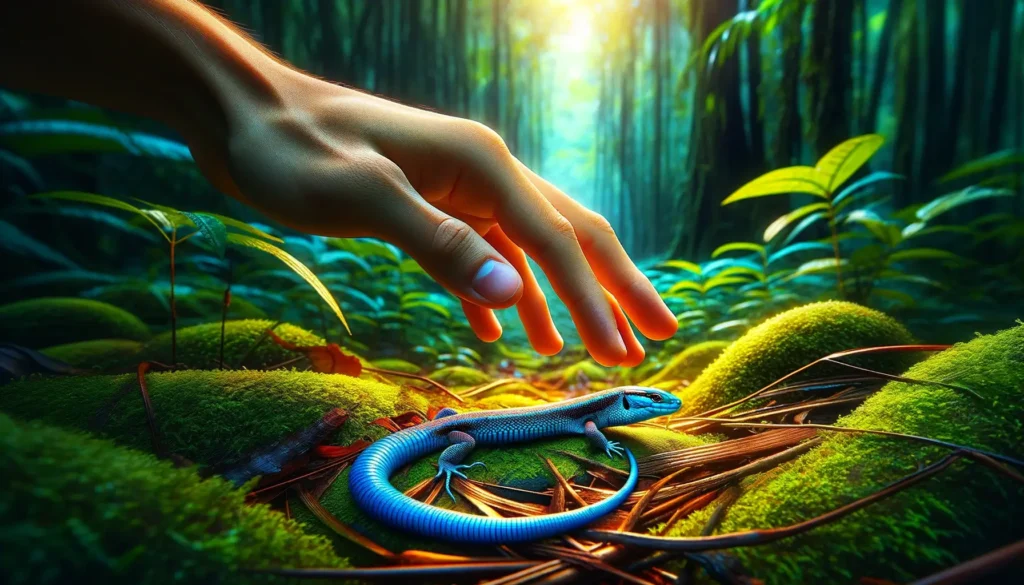
To find one, you’ll need to know the blue-tailed skink range. These reptiles are often found in Southeast Asia and Australia, but some species have spread to other regions. Once you’ve located their habitat, you can begin your pursuit.
Approach with caution. Skinks are known for their speed and skittishness, a part of their physical adaptations that led to their survival in the wild. Therefore, a slow, deliberate approach is key. Use a small net to gently catch the Skink, making sure not to harm it.
If you’re considering how to keep a blue-tailed skink as a pet, remember that a captured skink will require specific care. They need a suitable habitat to mimic their natural environment and a diet of insects. Always respect their needs and the freedom they are used to in the wild.
Blue Tailed Skink Where Do They Live
Diving into the habitat of the blue-tailed Skink, it’s important to note that these unique lizards predominantly reside in Southeast Asia and Australia’s warm and diverse ecosystems. When pondering ‘what is a blue-tailed skink,’ think of the freedom these critters enjoy in their natural habitats.

You can visualize the blue-tailed skink range with the help of a blue-tailed skink range map. Their habitats are characterized by:
- The lush rainforests and pristine beaches of Southeast Asia.
- Imagine these ecosystems’ vibrant, teeming life, the skinks darting amongst the foliage, a flash of blue in the green.
- The diverse Australian outback.
- Picture the skinks basking under the fiery Australian sun, their blue tails contrasting against the red sand.
These environments offer the skinks an abundance of food and hiding places. So, if you’ve ever wondered ‘where blue-tailed skinks live,’ now you know. A blue-tailed skink where they live is not a simple answer but a journey through diverse habitats filled with life and freedom. Their environments are as unique and captivating as the skinks themselves.

